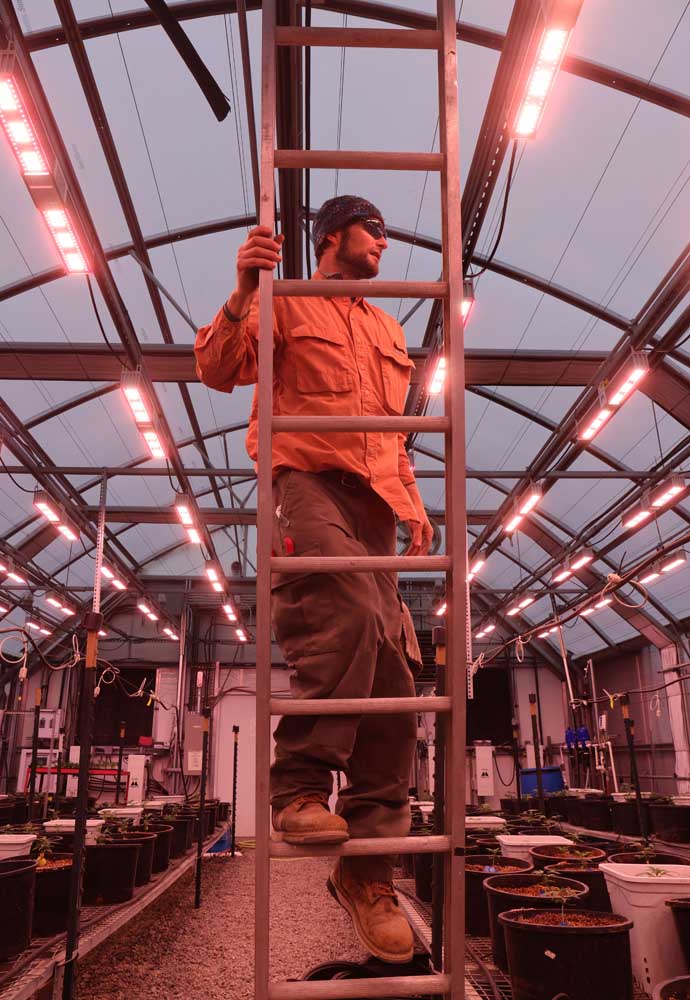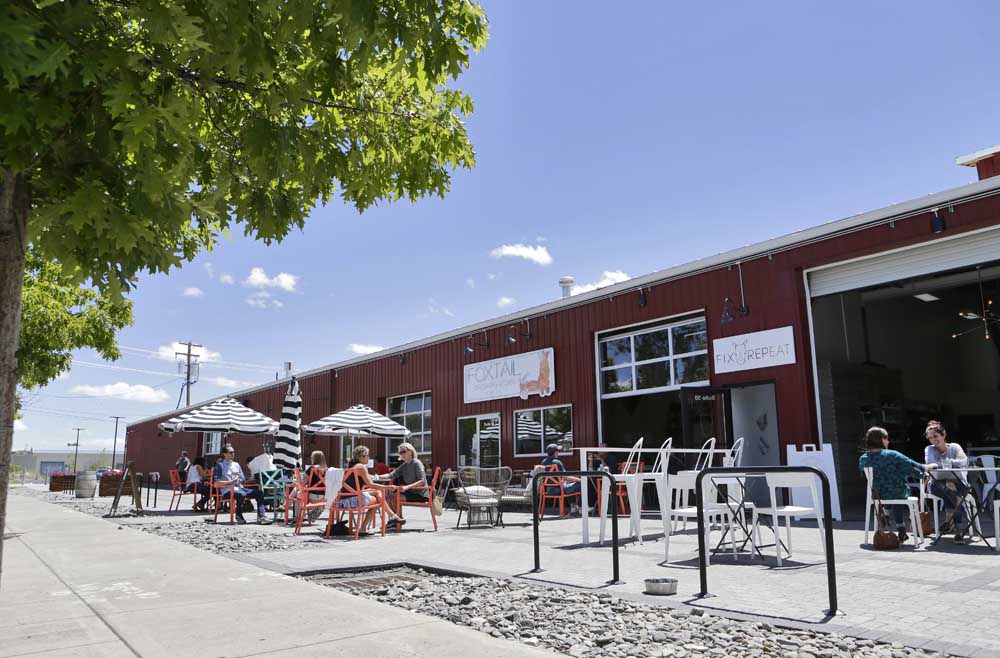Hemp goes from boom to bust for many Central Oregon farmers
Published 5:45 am Monday, January 15, 2024

- Chris Sullivan, Oregon Department of Agriculture hemp commissioner, checks roof seals in a hemp greenhouse at Lazarus Naturals in Powell Butte.
Only the most hardy hemp farmers are still in production in Central Oregon.
Despite tons of potential uses for the sturdy plants beyond deriving CBD flower and tinctures, very few markets developed, said Chris Sullivan, a Lazarus Naturals plant tech and quality control specialist who oversees 480 acres in Powell Butte.
Trending
After the federal government decriminalized hemp in 2018, it was boom time. Farmers rushed to plant the green leafy plant that resembles cannabis, but doesn’t have the THC, the compound that makes people feel high.
The industry experienced a complete contraction since it was allowed, however, causing many farmers to lose money and switch to other crops. There were multiple reasons, farmers and agronomists say, but the change was rooted in a lack of industries to support its products beyond CBD products.
In 2019, there were 7,900 acres of hemp registered with the Oregon Department of Agriculture in Deschutes, Crook and Jefferson counties. In 2023, there were 590 acres registered in the three counties.
“It’s pretty grim,” said Sullivan. “Those farmers that are still growing hemp are in it for the long haul and for a broader view other products. Now we’re in a space that those growing hemp now are under contract or are vertically integrated.
“We’re making ends meet and the value has come back up on the (the plant materials).”
Hemp’s back story
Trending
The Hemp Farming Act was passed by the Federal Government in 2018, removing industrial hemp from the U.S. Drug Enforcement Administration’s list of Schedule 1 drugs. The federal government considers Schedule 1 drugs harmful and addictive for a human being and have no medicinal use.
That same year, Oregon ranked third in the country for hemp acres planted behind, Montana and Colorado.
The state’s location on the 45th parallel makes for a perfect climate for hemp, according to the Oregon State University Global Hemp Innovation Center. Hemp is perfect for grain, seed oil, smokable flower and CBD products, according to the OSU Extension department study.
That prime location created a glut in the market as prices fluctuated. At one point, in 2019, hemp material was selling for just $1 a pound, Sullivan said.
In its heyday, hemp sold for about $40 a pound in Oregon. As the market bottomed out, the surplus created an opportunity for operators to develop other markets for CBD products, including a product that is similar to cannabis THC, called delta 9, delta 10 and hexahydrocannabinol.
Those new hemp products have policy makers racing to find a way to implement reasonable public health and safety regulations, said cannabis industry economist Beau Whitney, president of Whitney Economics in Portland.
While figuring out how to regulate the intoxicating hemp-derived products, the industry has again been negatively affected by cannabinoid policy that impacts fiber and grain policies, Whitney said. The industry is faltering again, Whitney said. Industrial hemp is trying to find its place as a farm product with wider economic potential and is more than just a CBD product.
Central Oregon hemp farmers pivot to other crops as market prices tank
“The impact is that the number of acres continues to decrease because of this hysteria over intoxicating cannabinoids,” Whitney said. “We don’t have a hemp market in Oregon any more, despite being one of the largest markets in 2019.
“There are no good boundaries from a regulatory perspective and that is impacting the growth of the biomass and fiber products.”
The new hemp product, that has psychoactive ingredients, is a $28 billion industry nationwide, Whitney said.
There’s uncertainty over what’s legal now and what’s not, and that scares away investors, Whitney said. The heightened concern is affecting the grain and fiber hemp market, which has potential to grow as a source of food that is rich in protein, fiber and fatty acids that can be eaten raw or used to make milk, oil or protein powder.
“If it’s from hemp, then it’s hemp and it’s legal,” Whitney said. “It’s inhibiting the growth of the fiber and grain markets.”
Not all farmers of hemp are entering that arena of psychoactive hemp products.
“I came into the hemp space for industrial use, animal bedding and other fiber uses,” Sullivan said. “At Lazarus Naturals we are growing industrial hemp and cannabinoid hemp. “
Looking ahead
When the hemp market didn’t develop, hemp producers had to go back to the drawing board.
“The market just didn’t develop,” said Gordon Jones, Oregon State University-Cascades state extension service and associate professor. “Folks were optimistic that the markets would exist. Uncertainty over the future regulations has prevented more solidification of the market.”
The future could be in the commodity crop arena, which could bring cost of production down and develop markets, Jones said. Markets can be developed at a slower pace now that there is more stabilization in the hemp industry, he said.
“As we move into a more sober time in the industry, I see folks experimenting more thoughtfully while growing crops and not expecting there will be a market when the crop comes off the field,” said Jones.
Whitney sees a future in hemp grain and fiber. It has a potential to be a larger market than other cannabinoid products, including recreational cannabis. Hemp grains can help address food insecurity and hunger, while fiber has industrial applications in the automotive, plastics, construction and pulp and paper industries, Whitney said. The two sectors need support at the federal and state level and need to be separated from the psychoactive drug element before it can reach its true potential, he said.
“The industry is being impacted by the anti-cannabinoid legislation,” Whitney said. “Policy makers need to manage the market or make reasonable regulations that focus on pubic safety but allow the market to mature and flourish. Because policy makers are focused on hemp cannabinoids then all of these opportunities are being lost because there’s no support from policy makers.”








